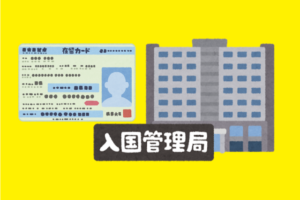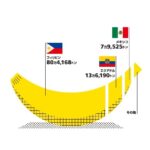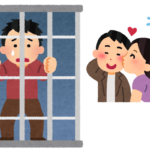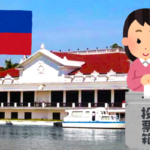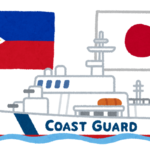
The land we bought to move to Cebu is located in a town called Pinamugajan.
It's about an hour and 20 minutes drive from Cebu City.
Cebu Island is long and narrow from north to south, with mountains like a spine, and Pinamungajan is located on the west side of the island, over a mountain pass from Cebu City.
On the other side of the island is Negros Occidental, where there is a ferry service from Toledo City, next to Pinamungajan.
Since it is a rural town, public transportation is limited.
There are only buses from the South Terminal in Cebu City, and there are no cabs or even jeepneys in Toledo City.
The general public uses tricycles and motorcycles to get around.
As such, a car is a necessity.
I have never lived in Japan where I needed a car (when I was transferred to live in Kumamoto and Kagoshima, a car was a necessity, but I used the company car to get around).
I've never bought a car before.
If I don't move to Cebu, I don't think I'll ever buy a car again.
But without a car, it would be inconvenient to move to Cebu.
So my wife and I talked about what kind of car we would like to buy in the Philippines.
Most of the cars on the road in the Philippines are Japanese cars.
In addition to Toyota, Mitsubishi, and Honda vehicles, Isuzu and Hino trucks are also common.
Toyota is the first manufacturer I would consider buying from, as some of their models are manufactured in the Philippines.
In the Philippines, where the gap between the rich and the poor is huge, expensive cars are driving around with a big face.
The most popular models are the Land Cruiser and the 8-seat minivan since there are many families.
We have two children, so I think a standard passenger car is sufficient. However, since we sometimes go to Cebu City for shopping, I think it would be easier to drive if we had a certain amount of horsepower to go over mountain passes.
Although prices are low in the Philippines, car prices are almost the same as in Japan.
In fact, imported luxury cars are overwhelmingly more expensive in the Philippines.
In Japan, the used car market is well developed and you can get reasonably priced cars, but I heard that it is better to avoid buying used cars in the Philippines. I heard that even if the car looks clean, there are many cars that have problems.
So, I will be buying a new car.
My wife and I discussed it and came to the conclusion that if we were to buy one, the Toyota Vios would be a good choice.
The Vios is manufactured in the Philippines, so it is reasonably priced.
Moreover, since Vios is the most common cab in Cebu, I think it is easy to get parts if I need repairs.
The price of the 1,500cc, five-seat, Continuously Variable Transmission Vios is 2 million Japanese yen, so it's not cheap.
In Japan, when I buy a new car, I have to pay consumption tax, registration tax, garage registration, insurance, and other costs in addition to the price of the car, but in the Philippines, such costs are included in the price, so while 2 million yen is not cheap, I don't think it's too expensive when I consider that it includes other costs.
Driving a car in the Philippines is highly challenging.
The traffic is on the right side of the road, there are few traffic lights, and tricycles and motorcycles are mixed in the streets. Furthermore, the driving manners are not as good as in Japan.
I don't have any problem driving around Pinamungajan and Toledo City, and even if I want to go shopping in Cebu City, I don't have to drive through the city until I get to SM Seaside Mall, so I think I can manage with my driving.
It will be a few more years before I move to Japan, but it is quite fun to think about what kind of house I will build and what kind of car I will buy.
